- News
- Reviews
- Bikes
- Accessories
- Accessories - misc
- Computer mounts
- Bags
- Bar ends
- Bike bags & cases
- Bottle cages
- Bottles
- Cameras
- Car racks
- Child seats
- Computers
- Glasses
- GPS units
- Helmets
- Lights - front
- Lights - rear
- Lights - sets
- Locks
- Mirrors
- Mudguards
- Racks
- Pumps & CO2 inflators
- Puncture kits
- Reflectives
- Smart watches
- Stands and racks
- Trailers
- Clothing
- Components
- Bar tape & grips
- Bottom brackets
- Brake & gear cables
- Brake & STI levers
- Brake pads & spares
- Brakes
- Cassettes & freewheels
- Chains
- Chainsets & chainrings
- Derailleurs - front
- Derailleurs - rear
- Forks
- Gear levers & shifters
- Groupsets
- Handlebars & extensions
- Headsets
- Hubs
- Inner tubes
- Pedals
- Quick releases & skewers
- Saddles
- Seatposts
- Stems
- Wheels
- Tyres
- Health, fitness and nutrition
- Tools and workshop
- Miscellaneous
- Buyers Guides
- Features
- Forum
- Recommends
- Podcast
review
£939.00
VERDICT:
The budget version of the fully-sprung German folder doesn't disappoint. It's an all-rounder that rides well.
Weight:
11,900g
Contact:
www.r-m.de
At road.cc every product is thoroughly tested for as long as it takes to get a proper insight into how well it works. Our reviewers are experienced cyclists that we trust to be objective. While we strive to ensure that opinions expressed are backed up by facts, reviews are by their nature an informed opinion, not a definitive verdict. We don't intentionally try to break anything (except locks) but we do try to look for weak points in any design. The overall score is not just an average of the other scores: it reflects both a product's function and value – with value determined by how a product compares with items of similar spec, quality, and price.
What the road.cc scores meanGood scores are more common than bad, because fortunately good products are more common than bad.
- Exceptional
- Excellent
- Very Good
- Good
- Quite good
- Average
- Not so good
- Poor
- Bad
- Appalling
The Birdy World Sport is a more versatile folding bike than similarly priced compacts like the Brompton. That's not to say it's better: the Brompton beats it hands down as a bike-rail commuter. It's not the best folder for touring or training rides either; that would be an Airnimal of some description. But it's a jack-of-all-trades folding bike that does all jobs well.

Good quality folding bikes aren't cheap. Folders already have to compromise between portability and rideability. Throw 'cheap' into the mix and it's too easy to end up with a hinged heavyweight that's awkward to carry and horrible to ride. That's why even an entry-level Brompton, that benchmark British folder, will set you back well over £800. The German Birdy is more expensive still, with the all the range comfortably into four figures. Except this one.
A price of under £1,000 for the Birdy World Sport means losing out on the refinements and options of the other models. There's no hydroformed tubing, hub gear, disc brakes, lights, or a la carte choices. What you see is what you get. And it comes in black.
It's still a Birdy, however, not a look-alike. It folds the same; the suspension is the same; and Birdy accessories like racks and bike bags will fit it. It reminded me very much of the old Birdy Red. Black, then, is the new Red.
Frame and fork
Like other Birdies, the TIG-welded aluminium frame and fork of the World Sport are unusual in a couple of respects. For one thing, there's no hinge in the main frame. That saves weight and, more importantly, eliminates flex. For another thing, there's suspension at both ends.
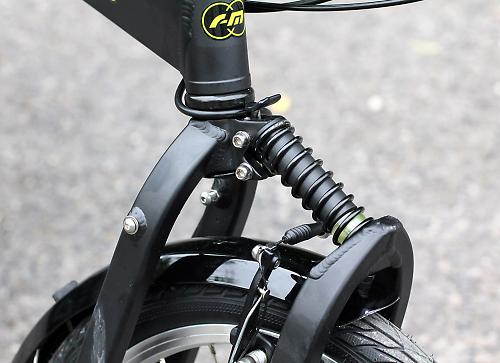
At the rear, there's a single pivot just behind the bottom bracket like there is on the Brompton. It's there so that the swing-arm (the 'rear triangle') and rear wheel can tuck underneath the main frame when the bike is folded. And like the Brompton, there's an elastomer bumper in between the top part of the swingarm and the seat tube. This is the rear shock.
It looks and is simple but works surprisingly well. Claimed travel is up to 60mm. At 65kg, the medium-density elastomer provided worked fine for me. Significantly heavier or lighter riders could retro-fit a firm or soft elastomer respectively; they cost about £15 each.

The front suspension also uses an elastomer – and again, firmer or softer versions can be fitted. It looks weird because of the leading link design. This kind of suspension fell out of favour off-road, where telescopic forks rule, but you still see some iterations of it on road; for example, the Moulton. A leading link fork has an advantage over a telescopic fork in that it doesn't 'dive' during braking. It also tracks well, so the steering feels firm. Pivot wear, a problem off-road, is a negligible issue on road. Fork travel is up to 30mm, so it'll cope with most potholes without bottoming out.
There's another advantage of this suspension setup for the Birdy that isn't immediately obvious. To fold the front end, you unclip the elastomer at the fork crown and tuck the front wheel under, rotating the fork on its pivots. Clever!

While the World Sport is a 'stripped down' Birdy, it nevertheless comes with frame-fitting SKS mudguards. You can fit Birdy racks front and rear too, although I would use a large Carradice saddlebag on an SQR block on the seatpost instead. It's neater, and 16-23 litres of luggage capacity on a folder is enough for me. Like most folding bikes, there are no bottle mounts.
Components
Like other Birdies, the World Sport uses 18-inch wheels. Nominally 18-inch, at any rate. The bead seat diameter is only 6mm more than the 16-inch wheel Brompton, at 355mm versus 349mm. That's close enough that you can use Brompton-sized innertubes in Birdy tyres, if you can't get hold of Birdy ones. (Bear in mind the Birdy rims are drilled for presta valves.)
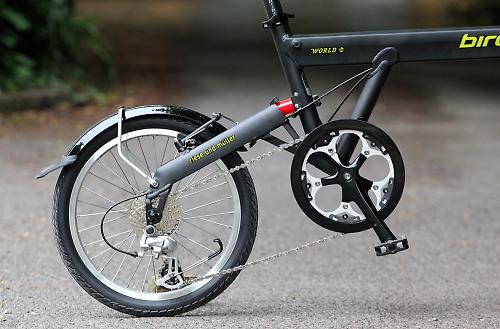
I can't think of another bike that uses ISO 355 wheels, so it's not surprising that tyre choice isn't great. It's not as bad as it was; Schwalbe offer several decent options, including the Kojak (which I'd pick), Marathon Racer, and Marathon Plus. In fact, tyres are the one component that it's worth upgrading immediately on the World Sport. The Impac Streetpac tyres supplied are stodgy and don't excel in any area.
Gearing is 8-speed, like the Birdy Red of old, using a twist-grip shifter and a Shimano 2300 road rear derailleur. The range of 33-90 inches is fine for most situations, although bottom gear could usefully be lower if you live anywhere hilly or plan to use the bike for touring. You can't just stick an 11-34 cassette in place of the existing 11-30 as a 2300 rear derailleur won't cope with that. If you don't mind losing a bit at the top end, you could fit a smaller chainring.

The V-brakes offer more power and modulation than the brakes of most folding bikes, despite unavoidably convoluted cable runs. The rear is likely to suffer uneven pad wear due to angle of the pads as they strike the rim; the pads are nowhere near perpendicular to the brake arms. This wasn't a problem during the test, but long term you may end up tinkering with this brake more than you'd like.
A parallel-push V-brake would solve this issue but they're like hen's teeth these days. They survived for a while in Shimano's top-end XTR groupset but now seem to have disappeared even from that. So if you do want a set, the easiest option is to look for 'XTR V-brakes' on ebay. They come up now and again.

The World Sport's contact points are fine. The saddle is okay and the grips have a flared support for the heel of your hand, like Ergon grips, which provides extra comfort. The stem height is adjustable via a quick-release, so you can sit up more if you want. I didn't.
It's great that the World Sport comes with mudguards. They're usually one of the first casualties of cost cutting. They're SKS ones and the stays are sturdy, particularly the rear ones. That's important because the bike sits on its mudguards when it's folded. There was on problem with the guards of the test bike: the central bolt that anchors the rear mudguard to its stay was too long and rubbed against the tyre so much that the wheel wouldn't go round. Maybe the stays had been bent before the bike got to me? Maybe the wrong bolt was installed? I fitted a shorter bolt and had no problems thereafter.
There's also a kickstand. I removed this. A folder often goes with you when you park, folded up. And this stand is bolted to the dropout in such a way that it forms a closed loop around the wheel quick-release. To get the wheel out in the event of a puncture, you have to remove the quick-release entirely. That's not a problem when you're taking the wheel out but it makes it fiddlier than it need be getting the wheel back in again.
The fold
The quoted size when folded is 79x61x36cm. I measured the World Sport at 84x63x39cm. I can see how things like rotating the handlebar or moving the saddle might reduce the pack size, but they're not things I'd normally do when folding the bike. Folding or pop-off pedals, which the World Sport doesn't have, would also slightly reduce the volume.

Even at this size, the folded World Sport is small enough for an end-of-carriage luggage rack on a train or for any car boot. You might even get it on a bus if you stash it one of the optional carry bags to disguise the fact that it's a bike. It won't go between seat backs on train like a Brompton. It's considerably bigger.
The folding process isn't as quick or as neat as Brompton either. Evidently it can be done in 15 seconds; it took me at least 30, even after quite a bit of practice.
To fold the World Sport, you first need to put the bike into top gear. With the aid of the guide that's fixed to the bottom of the derailleur, this ensures the chain stays in place. Then you undo a catch at the seat tube and tuck the rear end underneath, much like a Brompton. The pivots are angled slightly so the rear wheel ends up just to the left of main frame rather than directly under it.
Once the rear wheel is tucked all the way under, you lock it in place by dropping the seatpost. If the wheel is not tucked under properly, you cannot drop the seatpost all the way down; I did this a couple of times until I got the knack.

Then you tuck the front wheel under. You need to pick the bike up, unclip the front elastomer from the fork crown, and tuck the wheel back under the fork, rotating the front part of the fork around the suspension pivots. The wheel rotates into position around quite a large arc, which might present problems for small riders – bearing in mind that you're holding the bike in the air with your other hand. There's also the potential to get your hand dirty on the front wheel. It's not a difficult procedure as such, but it's not as obvious or easy as most folding bike folds. Once done, the front wheel comes to rest to the right of the main frame and at an angle.
The final step is to undo the stem clamp and drop the handlebar down alongside the back wheel. The folded package stands up by itself, although it can't be rolled into nooks and crannies like the Brompton. Actually carrying the folded Birdy is no more difficult – it's bigger but not heavier.
The main difference between using these bikes for mixed-mode transport is that you want to fold the Brompton. The Birdy you fold when you have to. It feels like a minor hassle, whereas folding a Brompton or even a fold-in-half bike like a Dahon feels trivial, like folding an umbrella.
The ride
The Birdy's ace card is its ride quality. It rides better than any other folding bike with wheels 20-inches or smaller in diameter. There's enough reach that you don't feel perched on it, the frame doesn't flex, and there's enough trail that it doesn't steer like a shopping trolley. You can race down descents at over 40mph and the World Sport still feels stable and safe, something that can't be said for all folders.

The simple elastomer suspension goes a long way to offsetting the issues that small wheels have compared to large ones. It removes the 'chatter' you get from anything other than a billiard table smooth road. That's more comfortable, since the bike absorbs small bumps before you do, and it improves the rolling performance, because the wheels flow over bumps rather than being buffeted or balked by them.
For best performance, small wheels need suspension, as the late Alex Moulton realised 50 years ago, but the Birdy is one of a small number of folding bike designs that has it front and rear. Better tyres, which I mentioned above, would boost performance further.
I rode the World Sport over a period of months, across towns and cities and on hilly country lanes. It felt more like riding a hybrid than a folder. You could easily do big distances on it if you wanted, whether day rides or full-blown cycle tours.
Around town, the secure handling and suspension make bad road surfaces much less of a problem than for many small-wheelers. Hitting a shallow pothole is not a catastrophe on the World Sport, and you can ride over cobbles at pace.
In stop-start town traffic, the bottom bracket feels too high, however. It's a stretch to get a toe down at junctions. I wasn't troubled much as I'm an average height bloke, but short riders might need to get off the saddle when pausing.
Verdict
The budget version of the fully-sprung German folder doesn't disappoint. It's an all-rounder that rides well.
road.cc test report
Make and model: Birdy World Sport
Size tested: n/a
Tell us what the product is for, and who it's aimed at. What do the manufacturers say about it? How does that compare to your own feelings about it?
Riese & Muller say:
The Birdy is a cult object from the house of Riese und Müller. Anyone who has ever ridden a Birdy doesn't want to part with it. This bicycle is certainly not a spare or secondary bicycle, but rather provides just as much comfort and riding fun as it's full sized siblings. Make no mistake, Birdy is a full fledged bicycle. The need for joints in the main frame was eliminated by cleverly incorporating the folding mechanism into the suspension pivot points. Thanks to the simple folding mechanism (takes about 15 seconds), the small pack size (79x61x36cm) and light weight (9.9 kg), Birdy is easy to carry and stow almost anywhere. Numerous accessory options allow for the customization of Birdy to your individual needs. Information can be found in the configurator.
The World Birdy (they call it that) means two trim levels (that is, the Sport and the Comfort), each in a different color with a reinterpretation of the original birdy frame and all of the typical features of Birdy. These models are produced uniformly for the whole world which creates cost savings that we gladly pass on to you. The sport has a black frame with adjustable stem, 8-speed derailleur, fenders and kickstand.
I say: it's a general purpose folding bike.
Tell us some more about the technical aspects of the product?
Here's the spec list of the bike, plus various measurements.
BIRDY WORLD SPORT
Price: £939
Weight: 11.9kg (11.7kg without kickstand)
Sizes: one size
Frame and fork: 7005 T6 aluminium, TIG welded, with Birdy elastomer shock. Aluminium fork with leading link suspension. Fittings for mudguards and luggage racks.
Wheels: 47-355 Schwalbe Impac Streetpac tyres, Alex DV 15 rims, 24/32 Sapim 2.0mm stainless steel spokes (front/rear), Birdy front hub, Shimano Acera (FH-RM60) rear hub
Transmission: VP flat pedals; Sunrace 56 teeth chainset, 170 mm, with chainring guard; 113mm square taper bottom bracket; KMC X8-93 chain; Shimano CS-HG40 8-speed cassette: 11-13-15-17-20-23-26-30. Shimano SL-RS-45-8 twist-grip shifter, Shimano RD-2300 rear derailleur. 8-speed, 33-90inches.
Braking: Avid V-brakes with Tektro levers
Steering and seating: Velo VLG 519 AD2 grips; 520mm X-tas-y aluminium bar; Birdy Sport height adjustable stem; DiaCompe Al2 Aheadset. R-M saddle; Birdy 7075 aluminum seatpost, 34.9x570mm
Accessories: SKS mudguards, kickstand, bell
Contact: r-m.de
Measurements
Seat clamp centre to stem clamp centre (horizontal) 685
Effective top tube 585
Standover 535
Seat angle 73
Head angle 71
Fork offset 15
Trail 63
Overall wheel diameter (inc tyre) 448
Crank length 170
Seat tube length (centre to top) 363
BB to ground 304
Chainstay length 430
BB to front hub 575
Wheelbase 1010
Rear wheel hub spacing 135
Tyre width 47
ISO wheelsize at bead seat 355
Folded dimensions
Quoted 79x61x36cm
Measured 84x63x39cm
Rate the product for quality of construction:
8/10
Rate the product for performance:
8/10
Great ride. Fold not bad.
Rate the product for durability:
6/10
Mudguards seem a bit vulnerable. Derailleur gears are prone to more problems (principally when folding) than hub gears.
Rate the product for weight, if applicable:
7/10
Rate the product for comfort, if applicable:
9/10
Rate the product for value:
7/10
Even the budget version isn't cheap, but it's a decent bike.
Tell us how the product performed overall when used for its designed purpose
Great. I used it for train-bike journeys and rides in the countryside.
Tell us what you particularly liked about the product
Suspension. Ride quality. Ability to take it just about anywhere.
Tell us what you particularly disliked about the product
The tyres. I'd upgrade them. A bit bulky compared to my Brompton. Doesn't have the Brompton's clever luggage system.
Did you enjoy using the product? Yes.
Would you consider buying the product? If I didn't already have a Brompton, yes.
Would you recommend the product to a friend? Yes.
Anything further to say about the product in conclusion?
Not the best folding folder but one of the best riding folders.
About the tester
Age: 42 Height: 1.78m Weight: 65kg
I usually ride: Ridgeback Solo World fixed wheel My best bike is: Planet X Pro Carbon Track (with front brake)
I've been riding for: Over 20 years I ride: Every day I would class myself as: Experienced
I regularly do the following types of riding: time trialling, cyclo cross, commuting, touring, club rides, sportives, general fitness riding, fixed/singlespeed, mtb,
Latest Comments
- perce 1 sec ago
Yep. Another scumbag using the ''truly remorseful'' defence. He will be out in months and free to get on with his life, unlike his victim. And...
- eburtthebike 8 min 31 sec ago
Of course you don't actually want to spend money intended for infrastructure on infrastructure, you want to spend it on plans for infrastructure,...
- Veganpotter 23 min 2 sec ago
My bet is that all these tires popping off are from people with bad pressure gauges or they're simply just putting too much air in on purpose. ...
- Hirsute 45 min 20 sec ago
You have to add images via a reply to yourself after the topic is created. One at a time too.
- Hirsute 47 min 30 sec ago
“Plus, riders who pair CarBack to their smartphone using the Trek Accessory app can enjoy even more features, including the ability to see the...
- Tom_77 1 hour 3 min ago
Had a Kona Blast sometime around the turn of the century, that was a pretty decent mountain bike for not much money....
- OldRidgeback 1 hour 4 min ago
Right whingers moaning about 20mph limits, cyclists and 'woke' are numbskull snowflakes IMHO.
- chrisonabike 1 hour 38 min ago
David9694 - you were right! These new autonomous vehicles really are conspiring to run out of control!...
- HoarseMann 2 hours 10 min ago
Decathlon have the Garmin Varia RTL515 on offer at the moment for £129.99: https://www.decathlon.co.uk/p/rearview-radar-varia-rtl515-65-lumens/_/R-...
- Rendel Harris 3 hours 20 min ago
So when you said "all Jews" you didn't actually mean all Jews, just religious ones. However even that distinction is erroneous, as you must surely...


































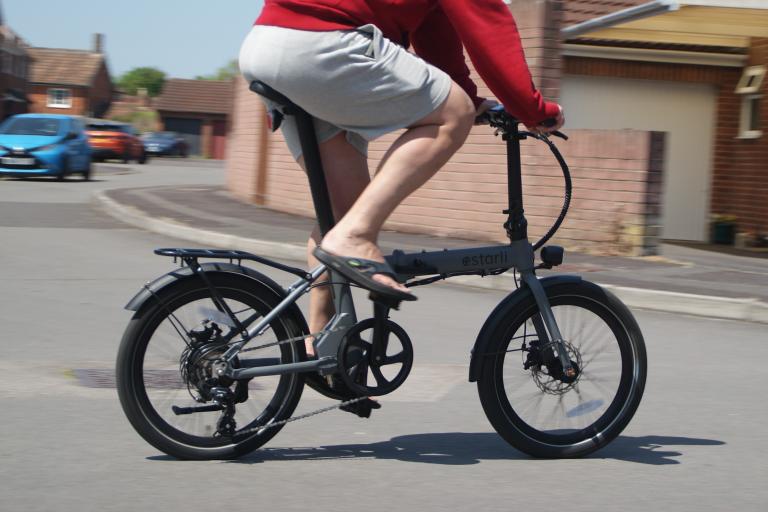
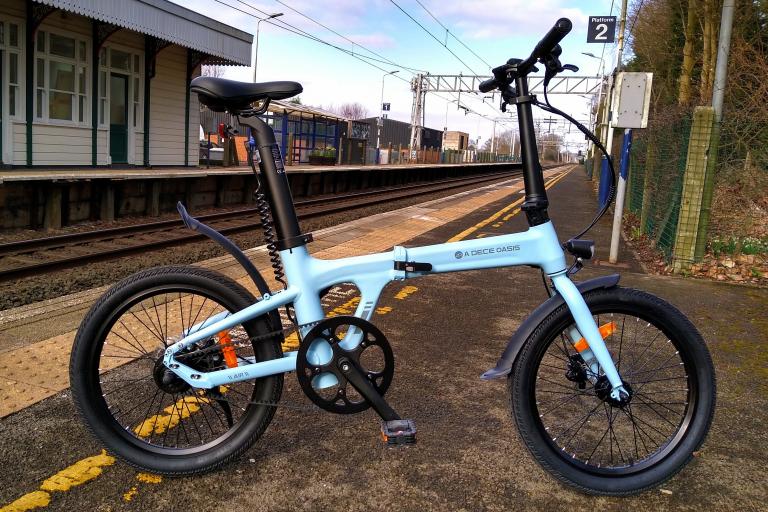
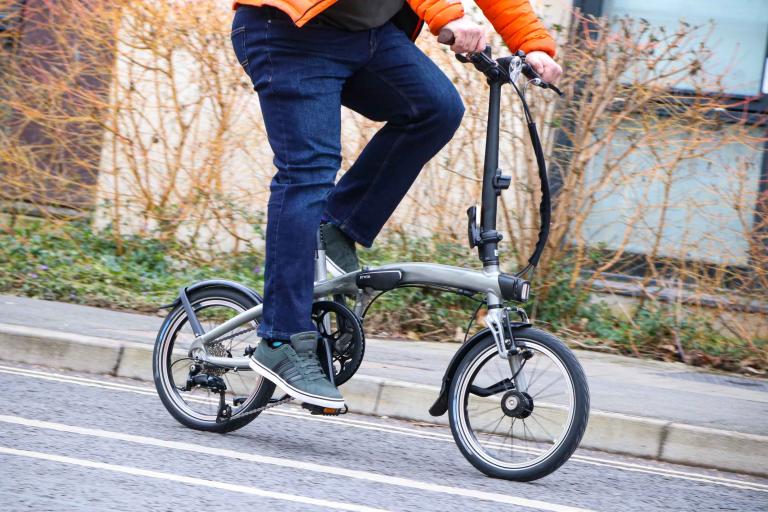
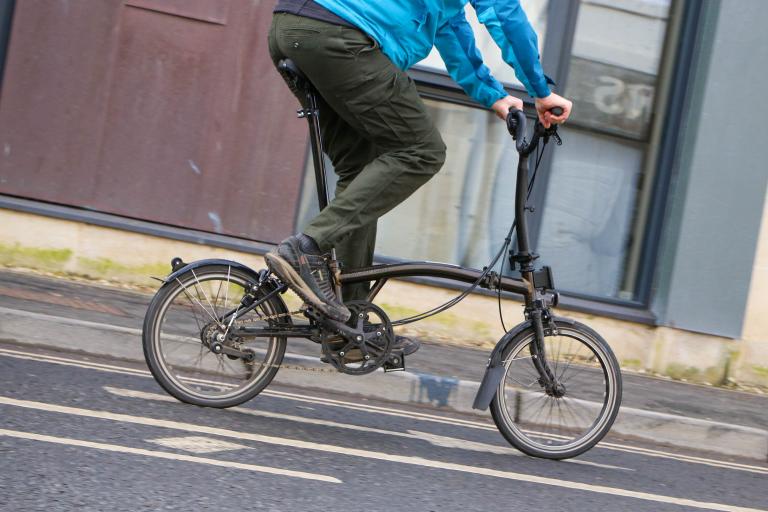
Add new comment
10 comments